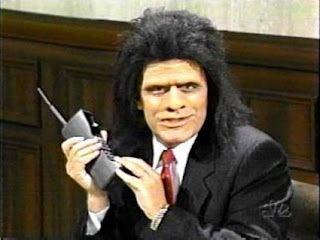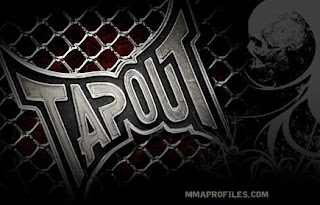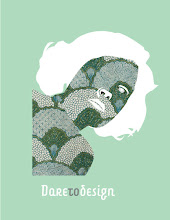So, keeping with the "law" posts of this month, I will mention some podcasts I've been using to educate myself on the important terminologies within this complex world we've come to know as the legal world. Now, whenever I design something (in this case, I was making 3D textures), I listen to some ambient or some IDM music, like Aphex Twin or The Orb to keep my mind at bay all the while being a bit catchy. But since I was yearning for a learning, I put on these podcasts. Let's see how they worked out.
The first podcast I was experimenting with was the BP/G Radio Intellectual Property Podcast. I'll admit, at first, I did not like the format. It seemed as though it was just me listening in on someone else's phone conversation a'la wiretapping. I was expecting Ernest Grumbles to be (or sound like) he was at the station, whilst the man with whom he is interviewing is on the obvious "I'm at home, so I'm using my phone" format. That would have made a much better impression. Funny enough, however, as time went by and the introductions were done, the conversation became interesting. Ernest Grumbles asked an important question. What is the doctrine of Fair Use? Bill McGeveran mentions that the name doesn't always match the reality. He mentions that there isn't just one doctrine that deals with communication but there is a "constellation" of doctrines that come from tons of different places and cover different activities. The biggest one, he says, is the "so-called" fair use or the classic fair use defense for when you're using a word that has a dictionary meaning and you are protecting it against a descriptive terminology that is being "soaked up" by a mark so much that it can't be used by the people. He mentioned nominative fair use, and followed up with an example from my law class: the New Kids on the Block case in the early 90's. He said that if you are referring to the brand as a brand, that is nominative fair use. He also touched face with the first-amendment defense. Overall, this was a very informative podcast. I listen to the other episodes now. =)
Next up is the Suffolk University Law School Podcast. I know, I'm not from there. However I feel it's best that if I don't know law, why not? I watched two very short episodes concerning visual artist protection. The first one talks about the Visual Artists Right Act of 1990. After finally joining the large copyright treaty, the Berne Convention, the U.S kinda had that feeling that it had to protect its moral rights, which, according to the host, is a bit alien to the way the U.S Copyright Law came about. He went to describe the U.S Copyright Law. "Derived from English Law, is an economic incentive. In Article I Section VIII of the U.S Constitution, the Copyright Law was meant to motivate authors to create work of their own. According to the U.S, if you allow creators, named authors in the Constitution, to get paid for their work by having a monopoly, the U.S will get more and better work. In other words, if a creator isn't paid for his/her work, their likely to become a Hair Dresser or something. If you allow them to create, this economic incentive will create new and better work. In Europe certain rights of Authors aren't economic but a natural right. In other words, in Countries that follow the French model of moral rights, the Author can protect against distortion and anything of that nature. The host mentioned that the moustache on the Mona Lisa would violate that right. In the U.S, he says, it may be a crime to do that, but it would not violate his rights as an artist. He also mentioned a case in France where the colorisation of a film had led to the violation of one's right as an Author. We don't have that mentality in the majority of this Country, apparently. Since the Berne Convention required adherence to moral rights, however, Congress passed the Visual Rights Act. It provides very limited protection to creators of visual works of art to claim authorship of the work to prevent distortion. He also went into recognized stature and what that dealt with. Short, but very informal.
The second posting was centralized around a bill in Congress that Sen. Charles Schumer of New York proposed, that is titled The Innovative Design Protection and Piracy Prevention Act. According to the host, historically in the U.S fashion design is not protected. Let's say you watch someone on the red carpet in a nice gown. You, being a copycat like myself, will go straight to your sewing machine and make one of your own. I can't steal the trademarks, per se, but I can "steal" the design. The host mentioned that there were two points of view. One, is that we already protect innovative design through Intellectual Property Law. On the other hand, it's hard to argue that Fashion Design isn't creative. Of course it is. Some people say that if we apply intellectual property protection that it will inhibit creativity. Essentially because the lack of protection will lead to a massive shock, and competition will slow down due to major fashion names having the ability to keep others from using a similar design. A very nice listen for those interested.
And last but certainly not least, is one that really has nothing much to do with law. But an aspect of this can still be helpful. Design and Architecture is a podcast I listen to in my sleep sometimes. But many of the episodes are great. For example, this episode, which asks the question: When is a logo a no-go? Frances Anderton interviewed influential people within the branding world, like Sasha Strauss, a Branding Consultant, who mentioned the GAP logo change. He asked the question that most people ask when it comes to brands: When I think of GAP (in this case), I think of blue square and all caps. Now, I am very familiar with this. GAP felt that they needed to be more "contemporary" and "hip" and went with the "helvetica" look that everyone loves to do nowadays. They changed the lettering to title-case, and they shrunk the blue box and moved to the right corner. I personally thought that, like most changes, it wasn't needed. And Sasha's sentiments were essentially the same.
He also nailed the point when he states that the reason many of these companies fail is that instead of revamping their internal organizational structure, they find it easier go for the quick and easier way to get a rise out of everybody: make a logo. Now, it does work...but not for long. As soon as people get over the shock, and start to think as to why they would do this (not coming up with an answer), they will drop it. Strauss also directs the listener towards the BP logo change. "BP" used to stand for British Petroleum. Now it stands for Beyond Petroleum. But, according to Strauss, if you look back into their books, a very small percentage (like .1%) had anything to do with anything beyond petroleum. Strauss also mentioned that most people do not remember logos off of the top of their head. He used Toyota as an example. We see the Toyota logo and we know what it is. But can we draw it? I can say that I cannot, in painstaking detail, remember a logo enough to accurately draw it. That's because the emblem or the logo is just the ignition switch for the brand. A fine point he states later on is that there is a difference between a symbol, a logo, and a wordmark. A logo could be a combination of things, like lettering. (Johnson and Johnson/Dell) Dell is a fine example, because it is a word that is also a construct of lettering. The "E" is curved on its side, giving it a unique look. Johnson and Johnson is a collection of letters in word form, which makes it a wordmark. The symbol is the stuff that, well, many people think that that is what all logos are. That shape. That color. That arc. The imagery. In my opinion, there's more to a logo than that. I've had clients say they needed a logo, and I'd feel something die inside =D Ahem.
A recent posting I've been listening to was from Ed Poll's LawBiz® Podcast. The episode was titled Technology: Is the bleeding edge needed to succeed?. Essentially so far, it's been talking about how technology can be a two-edged sword. But the guest was extremely informative on the topic, so I might have to read it again, haha.
So, yeah. Just food for my thoughts I guess. If I misconstrued something, hit me a comment. I'm still learning this stuff and kinda took these guys at their word. They seemed educated.
The first podcast I was experimenting with was the BP/G Radio Intellectual Property Podcast. I'll admit, at first, I did not like the format. It seemed as though it was just me listening in on someone else's phone conversation a'la wiretapping. I was expecting Ernest Grumbles to be (or sound like) he was at the station, whilst the man with whom he is interviewing is on the obvious "I'm at home, so I'm using my phone" format. That would have made a much better impression. Funny enough, however, as time went by and the introductions were done, the conversation became interesting. Ernest Grumbles asked an important question. What is the doctrine of Fair Use? Bill McGeveran mentions that the name doesn't always match the reality. He mentions that there isn't just one doctrine that deals with communication but there is a "constellation" of doctrines that come from tons of different places and cover different activities. The biggest one, he says, is the "so-called" fair use or the classic fair use defense for when you're using a word that has a dictionary meaning and you are protecting it against a descriptive terminology that is being "soaked up" by a mark so much that it can't be used by the people. He mentioned nominative fair use, and followed up with an example from my law class: the New Kids on the Block case in the early 90's. He said that if you are referring to the brand as a brand, that is nominative fair use. He also touched face with the first-amendment defense. Overall, this was a very informative podcast. I listen to the other episodes now. =)
Next up is the Suffolk University Law School Podcast. I know, I'm not from there. However I feel it's best that if I don't know law, why not? I watched two very short episodes concerning visual artist protection. The first one talks about the Visual Artists Right Act of 1990. After finally joining the large copyright treaty, the Berne Convention, the U.S kinda had that feeling that it had to protect its moral rights, which, according to the host, is a bit alien to the way the U.S Copyright Law came about. He went to describe the U.S Copyright Law. "Derived from English Law, is an economic incentive. In Article I Section VIII of the U.S Constitution, the Copyright Law was meant to motivate authors to create work of their own. According to the U.S, if you allow creators, named authors in the Constitution, to get paid for their work by having a monopoly, the U.S will get more and better work. In other words, if a creator isn't paid for his/her work, their likely to become a Hair Dresser or something. If you allow them to create, this economic incentive will create new and better work. In Europe certain rights of Authors aren't economic but a natural right. In other words, in Countries that follow the French model of moral rights, the Author can protect against distortion and anything of that nature. The host mentioned that the moustache on the Mona Lisa would violate that right. In the U.S, he says, it may be a crime to do that, but it would not violate his rights as an artist. He also mentioned a case in France where the colorisation of a film had led to the violation of one's right as an Author. We don't have that mentality in the majority of this Country, apparently. Since the Berne Convention required adherence to moral rights, however, Congress passed the Visual Rights Act. It provides very limited protection to creators of visual works of art to claim authorship of the work to prevent distortion. He also went into recognized stature and what that dealt with. Short, but very informal.
The second posting was centralized around a bill in Congress that Sen. Charles Schumer of New York proposed, that is titled The Innovative Design Protection and Piracy Prevention Act. According to the host, historically in the U.S fashion design is not protected. Let's say you watch someone on the red carpet in a nice gown. You, being a copycat like myself, will go straight to your sewing machine and make one of your own. I can't steal the trademarks, per se, but I can "steal" the design. The host mentioned that there were two points of view. One, is that we already protect innovative design through Intellectual Property Law. On the other hand, it's hard to argue that Fashion Design isn't creative. Of course it is. Some people say that if we apply intellectual property protection that it will inhibit creativity. Essentially because the lack of protection will lead to a massive shock, and competition will slow down due to major fashion names having the ability to keep others from using a similar design. A very nice listen for those interested.
And last but certainly not least, is one that really has nothing much to do with law. But an aspect of this can still be helpful. Design and Architecture is a podcast I listen to in my sleep sometimes. But many of the episodes are great. For example, this episode, which asks the question: When is a logo a no-go? Frances Anderton interviewed influential people within the branding world, like Sasha Strauss, a Branding Consultant, who mentioned the GAP logo change. He asked the question that most people ask when it comes to brands: When I think of GAP (in this case), I think of blue square and all caps. Now, I am very familiar with this. GAP felt that they needed to be more "contemporary" and "hip" and went with the "helvetica" look that everyone loves to do nowadays. They changed the lettering to title-case, and they shrunk the blue box and moved to the right corner. I personally thought that, like most changes, it wasn't needed. And Sasha's sentiments were essentially the same.
He also nailed the point when he states that the reason many of these companies fail is that instead of revamping their internal organizational structure, they find it easier go for the quick and easier way to get a rise out of everybody: make a logo. Now, it does work...but not for long. As soon as people get over the shock, and start to think as to why they would do this (not coming up with an answer), they will drop it. Strauss also directs the listener towards the BP logo change. "BP" used to stand for British Petroleum. Now it stands for Beyond Petroleum. But, according to Strauss, if you look back into their books, a very small percentage (like .1%) had anything to do with anything beyond petroleum. Strauss also mentioned that most people do not remember logos off of the top of their head. He used Toyota as an example. We see the Toyota logo and we know what it is. But can we draw it? I can say that I cannot, in painstaking detail, remember a logo enough to accurately draw it. That's because the emblem or the logo is just the ignition switch for the brand. A fine point he states later on is that there is a difference between a symbol, a logo, and a wordmark. A logo could be a combination of things, like lettering. (Johnson and Johnson/Dell) Dell is a fine example, because it is a word that is also a construct of lettering. The "E" is curved on its side, giving it a unique look. Johnson and Johnson is a collection of letters in word form, which makes it a wordmark. The symbol is the stuff that, well, many people think that that is what all logos are. That shape. That color. That arc. The imagery. In my opinion, there's more to a logo than that. I've had clients say they needed a logo, and I'd feel something die inside =D Ahem.
A recent posting I've been listening to was from Ed Poll's LawBiz® Podcast. The episode was titled Technology: Is the bleeding edge needed to succeed?. Essentially so far, it's been talking about how technology can be a two-edged sword. But the guest was extremely informative on the topic, so I might have to read it again, haha.
So, yeah. Just food for my thoughts I guess. If I misconstrued something, hit me a comment. I'm still learning this stuff and kinda took these guys at their word. They seemed educated.




















